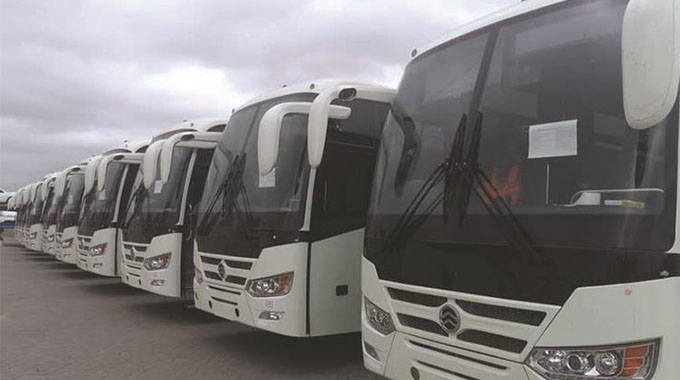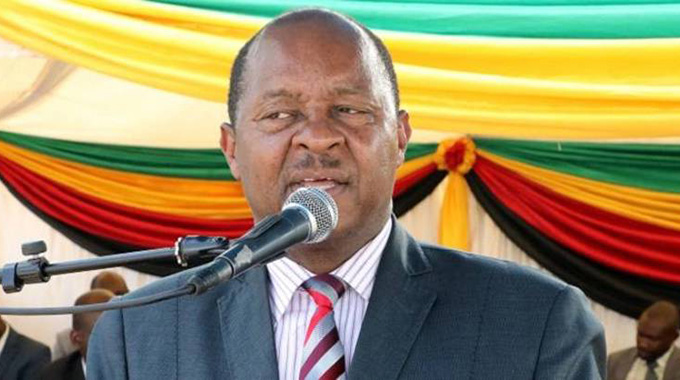Zupco hits half a million mark

Leroy Dzenga Herald Reporter
THE Zimbabwe United Passenger Company (Zupco) has, since the beginning of the year, increased its fleet to 500 conventional buses, both its own and those using its franchise, and 383 kombis.
It is making 500 000 urban journeys a day, that is one-way trips on a single route.
Almost all people make at least two journeys a day, going to and from work, and some make four — home to city centre, city centre to work, work to city centre and then city centre – home.
In addition, Zupco moves 100 000 passengers per day on its inter-city routes, that is one-way trips between cities.
But the size and potential of the market is shown by the action the Government continues to take to build the Zupco fleet.
President Mnangagwa recently said the introduction of the mass transport system sought to provide a safe and reliable urban transport system.
“My administration in its effort to provide a safe and reliable urban transport system, has facilitated the introduction of a urban mass transport system through Zupco in partnership with private operators, some of whom are here.
“As a Government, we have a vision of developing an integrated and multi-model urban transport system which shall include trains, trams and buses plying rural, intercity, cross border and intra city journeys,” he said.
The Government struck deals with China and Belarus to quadruple the conventional fleet to over 2 000 buses, with regular batches of the planned 1 500 new buses already arriving and a local assembly planned.
Zupco intends to triple the number of franchised kombis flying its colours to 1 000.
Zupco acting chief executive Mr Evaristo Madangwa said while the firm had gone from virtually nil urban service to 100 percent penetration in cities and towns, it still lacked the capacity to match the number of buses to the number of passengers in need of its services.
The capacity to transport 500 000 passengers a day means less than 250 000 urban residents countrywide are able to make the return journey to and from work, school or business each day by Zupco buses, with some needing four journeys for the return trip from home to desired destination.
Most of these passengers are terminus to terminus passengers.
It is rare for Zupco buses and kombis to have spare seats to pick passengers at intermediate bus stops, with the conventional buses in particular, their standing passengers jam-packed in the aisle, to be able to pick up a waiting passenger even if someone gets out at an intermediate stop.
Even in suburbs where there is a Zupco service terminus, urban passengers using Zupco usually have to walk some distance to this terminus and join a queue at least an hour before they can catch a bus.
The Government, as it recapitalises Zupco by buying buses, has insisted that the rural routes receive their fair share of the fleet and Zupco now moves 100 000 passengers one-way between cities, towns and villages each day.
The expansion of the fleet since January and the vast increase in operations has made Zupco once again a major employer.
“Since January, we have managed to employ 1 500 people many of whom are drivers, conductors and inspectors,” said Mr Madangwa.
Zupco fares are significantly lower than those of the independent kombis, usually a quarter to half the price.
The Government subsidises Zupco operations, basically through fuel, and budgets a proportion of the excise duty levied on petrol and diesel to public transport.
This is a common system throughout the world. For example, the US Government is bound by law to use a proportion of the federal tax on fuels for advancing public transport and the Federal Republic of Germany has an additional fuel tax that is distributed between the federal states and must be used to subsidise public transport.
Zupco kombis, with their $2 fares, are slightly more expensive than Zupco buses but still a lot cheaper than the independent kombis.
The growing competition is encouraging more kombi owners to join the Zupco deal and meet the conditions and operational controls imposed by Zupco to ensure efficiency and remove the temptation for cheating.
Mr Madangwa is confident that Zupco will soon meet the initial target of 1000 kombis under franchise.
Zupco kombis are particularly important on the routes that do not justify large buses, and even on busier routes can usually ensure a far more frequent service outside peak hours.
But even on these routes, they are still a small minority, although they always travel full as people are prepared to wait in a queue rather than take the first available independent kombi.
Observations by The Herald show that independent kombis still dominate the public transport market, despite Mr Madangwa’s claim that Zupco now has 65 percent of the urban market and half the intercity market.
This is despite the fact that Zupco records show 300 000 urban passengers a day in the conventional buses assigned to urban operations and 200 000 urban passenger journeys a day assigned to the Zupco franchised kombis.
The growing Zupco presence, though, has tended to limit independent kombi fares and increases are kept within proportion when fuel prices rise. Before the January re-introduction of Zupco urban services kombi fares were rising far faster than fuel prices would suggest was rational.
Commuter omnibus operators who signed up for the franchise say the invitation to play a part in Zupco’s revival has reduced headaches.
Mr Hardlife Chipika of Pamushana Transport, who was part of the pilot project, said there are a lot of positives from the deal.
“The fleet is now able to be on the road seven days a week which was difficult for us due to erratic fuel supplies. There is assured income which was now hard to guarantee.
“There is a marked decrease of about 40 percent in distance travelled per day by the vehicles. On average, before the deal, vehicles were clocking 350 to 400 kilometres per day which has come down to a range of 200 to 250km a day,” said Chipika.
Through the Zupco deal, commuter omnibuses that were largely informal are now able to contribute to the fiscus through tax.
“Many operators were not banking, making them ineligible for financial assistance in form of loans from banks as they did not have a trail of transactions,” Chipika said.
According to a number of operators, they are getting their dues within agreed timeframes.
For the passengers the ZUPCO facility has reduced transport costs and also reigned in errant operators who were wantonly increasing fares.
“Where we were supposed to spend $160 on transport a month, we are now using $80 on ZUPCO kombis. You obviously wait a bit longer but it is fine as long as I save,” a Warren Park resident told The Herald.
“ZUPCO has also cushioned us in that other transport operators who are outside the facility cannot just increase their fares they have to be as close as possible to the fares charged by ZUPCO of between $1 and $2 depending on the route.”
She is one of the many who have found convenience in the return of the relatively cheaper ZUPCO.
The revival has been effective but imperfect, there are still a number of concerns.
The rainy season is here but ZUPCO and local authorities are yet to come up with a position on the provision of infrastructure like shelters at terminuses and bus stops. Before the previous collapse of Zupco such shelters were common with advertising rights frequently paying the costs for the bus stop shelters.
City of Harare principal information officer Mr Innocent Ruwende admitted there was need for urgent refurbishment of shelters at council terminuses.
“Currently, council is working with ZUPCO to try and refurbish the sheds at the terminuses so they are usable during the rainy season.
“We are also partnering private investors who are erecting bus terminuses in exchange of advertising space. A model is at Queensdale shops,” Mr Ruwende said.
Looking ahead Mr Madangwa said that Zupco wants to work hard to trim inefficiencies such as time management and making the system more convenient especially to vulnerable groups.
Observers note that at present Zupco does not need much sophistication in operations, since every bus travels full on every journey thanks to the large fare differentials with the independents. But as Zupco moves to dominance in its markets and starts running tight schedules again, greater attention to operational management will be required to prevent buses running half full on some routes at quieter times, a problem that Zupco and its predecessor companies all faced. The franchising of kombis is already helping here.
A full Zupco service will also see maximum fleet use at peak periods, but greatly diminished services between the peaks. That led to complications with labour regulations in that only half the drivers could have a continuous eight-hour day, the other half needed at work for four hours in the morning and four hours in the afternoon and evening.










Comments